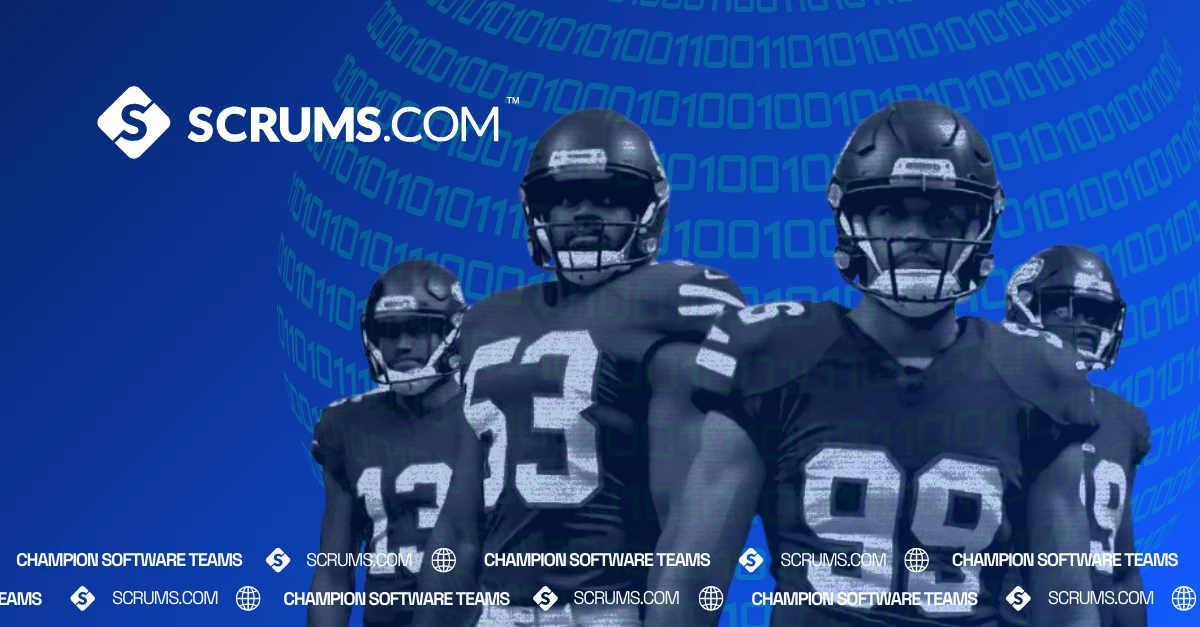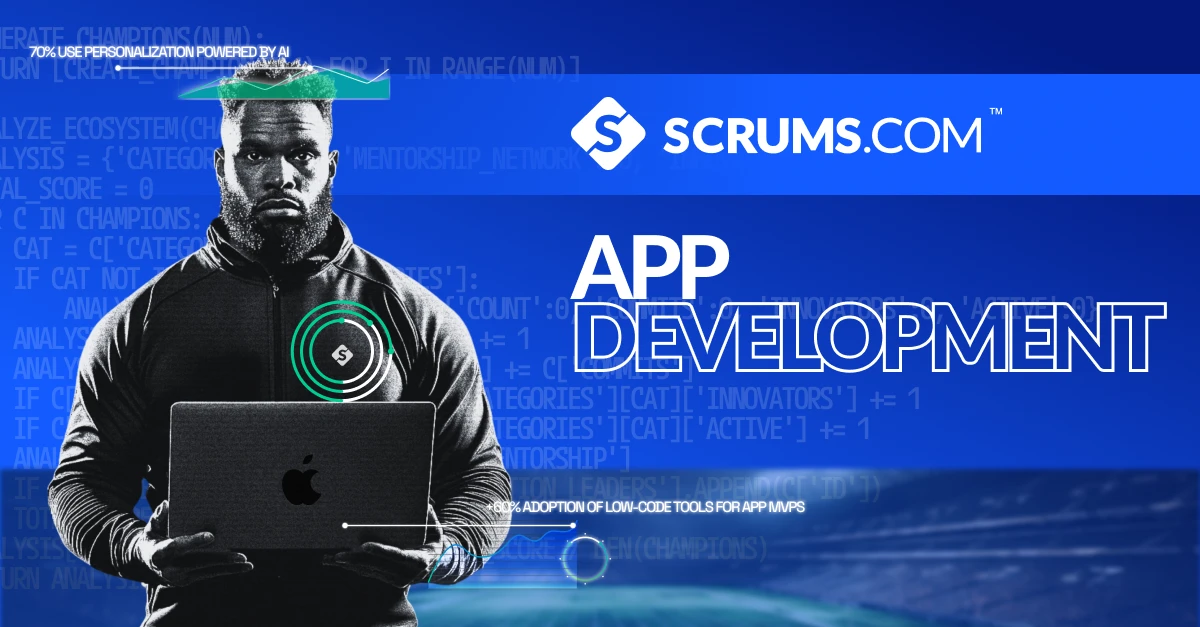Point of Purchase (PoP) app development
Build custom app solutions with Scrums.com's expert development team. With an NPS (Net Promoter Score) of 82, Scrums.com crafts cost-effective, custom applications that drive results.
Trusted by 400+ Global Companies







































Point of Purchase (PoP) App Development
Point of Purchase (PoP) apps are designed to enhance the retail experience by providing real-time, location-based marketing and sales tools that engage customers directly at the point of purchase. These apps play a crucial role in influencing purchasing decisions by delivering targeted promotions, product information, and personalized offers when and where they matter most—right at the checkout or within the store. In the United States, where retail competition is fierce, PoP apps are becoming a critical component of modern retail strategies.
PoP apps typically include features such as push notifications for in-store promotions, mobile coupons, product scanning for detailed information, and integration with loyalty programs. These apps aim to create a seamless and personalized shopping experience, encouraging impulse purchases and increasing customer loyalty. The development of PoP apps focuses on creating responsive, user-friendly platforms that can operate efficiently within the retail environment and offer real-time data processing.
App Development in the PoP Industry
The PoP industry has been significantly impacted by advancements in app development, particularly as retailers seek to create more personalized and interactive shopping experiences. PoP apps have transformed the way retailers engage with customers, making it possible to deliver targeted offers and promotions directly to shoppers' mobile devices while they are in-store.
In the US, the adoption of PoP apps has been driven by the increasing importance of mobile commerce and the need for retailers to differentiate themselves in a crowded market. According to a report by eMarketer, mobile proximity payments are expected to surpass $300 billion in the US by 2024, highlighting the growing role of mobile technology in the retail experience. Custom PoP apps allow retailers to leverage this trend by offering unique features such as geofencing, augmented reality (AR) experiences, and real-time analytics.
The development of PoP apps is also influencing the broader software development industry. Developers are focusing on creating apps that integrate advanced technologies such as AI for personalized offers, machine learning for predictive analytics, and IoT for enhanced in-store connectivity. These innovations are pushing the boundaries of what PoP apps can offer, making them more effective in driving sales and enhancing the overall customer experience.
The Impact of App Development
App development has had a profound impact on the PoP industry, changing how retailers interact with customers and how customers make purchasing decisions. PoP apps have made it easier for retailers to deliver personalized offers, track customer behavior, and respond to market trends in real time, leading to increased sales and customer loyalty.
In the United States, the impact of PoP apps is particularly significant in enhancing in-store engagement and driving impulse purchases. Retailers like Target and Walmart have implemented PoP apps that offer customers personalized deals, product recommendations, and in-store navigation, creating a more convenient and enjoyable shopping experience. According to a study by Accenture, 56% of consumers are more likely to shop at a store that offers personalized promotions through a mobile app, underscoring the importance of PoP technology in modern retail.
Moreover, PoP apps have empowered retailers to gather valuable data on customer behavior, enabling them to optimize their marketing strategies and improve store layouts. This data-driven approach has not only enhanced the effectiveness of in-store promotions but also allowed retailers to create a more personalized shopping experience that resonates with customers.
The Benefits of Custom App Development
Custom app development offers numerous benefits for retailers looking to create a unique and effective PoP app. Unlike generic solutions, custom PoP apps are designed to meet the specific needs of a business, ensuring that all features and functionalities align with the brand’s goals and customer expectations.
For the PoP industry, the benefits of custom app development include:
- Personalized Customer Engagement: Custom PoP apps can be designed to offer personalized promotions, product recommendations, and shopping experiences based on customer preferences, purchase history, and real-time behavior.
- Integration with Existing Systems: Custom apps can integrate with a retailer's existing systems, such as CRM, inventory management, and POS, providing a seamless experience that connects all aspects of the business.
- Enhanced In-Store Experience: Custom PoP apps can include features like AR for interactive product displays, in-store navigation, and mobile checkout, making the shopping experience more engaging and convenient.
- Scalability: As retailers expand their operations, custom PoP apps can be scaled to accommodate more stores, customers, and features, ensuring a consistent experience across all locations.
- Data-driven Insights: Custom apps can provide real-time analytics on customer behavior, store performance, and promotional effectiveness, helping retailers make informed decisions and optimize their marketing strategies.
For example, a custom PoP app developed for a high-end fashion retailer might include features like virtual try-ons using AR, personalized styling advice, and integration with a loyalty program, all tailored to the specific needs of fashion-conscious shoppers.
What are the Tech Stacks?
The development of PoP apps requires a robust and flexible tech stack to ensure high performance, scalability, and real-time data processing. The tech stack refers to the combination of programming languages, frameworks, and tools used to build the app. Popular tech stacks for PoP app development include:
- Frontend: React Native, Flutter, Swift (iOS), Kotlin (Android)
- Backend: Node.js, Python (Django), Ruby on Rails, Java, Go
- Database: PostgreSQL, MySQL, MongoDB, Firebase
- Real-time Features: WebSocket, Firebase, Pusher
- Cloud Services: AWS, Google Cloud, Microsoft Azure
- AI/ML Integration: TensorFlow, PyTorch, IBM Watson
- IoT Integration: Bluetooth Low Energy (BLE), MQTT, Zigbee
These tech stacks are chosen for their ability to support complex PoP functionalities, handle large volumes of real-time data, and provide the flexibility needed to integrate new features and services as the app evolves.
Advantages of the Tech Stacks
Each tech stack offers unique advantages, particularly when applied to PoP app development:
- React Native and Flutter: These frameworks enable cross-platform development, allowing developers to create apps that run smoothly on both iOS and Android devices, ensuring a consistent user experience across platforms.
- Node.js and Django: Known for their scalability and speed, these backend frameworks are perfect for handling real-time data processing, making them ideal for PoP apps that require instant updates and notifications.
- TensorFlow and PyTorch: These AI and ML frameworks enable the integration of advanced analytics into PoP apps, allowing developers to offer personalized recommendations, predictive analytics, and improved customer engagement.
- AWS and Google Cloud: These cloud services offer scalable and secure infrastructure, ensuring that PoP apps can handle fluctuating traffic volumes, store large amounts of customer data, and maintain high levels of performance and security.
App Ideas within the PoP Industry
The PoP industry presents numerous opportunities for innovative app development. Here are some potential app ideas that could make a significant impact:
- AI-driven Promotion Engine: An app that uses AI to analyze customer data and deliver personalized promotions in real time, increasing the effectiveness of in-store marketing and driving sales.
- AR-enhanced Shopping Experience: An app that uses augmented reality to create interactive product displays, allowing customers to visualize products in different settings or explore additional product information through their smartphones.
- In-Store Navigation with IoT: An app that integrates with IoT devices to provide real-time in-store navigation, helping customers find products more easily and offering location-based promotions as they move through the store.
- Mobile Checkout Solution: An app that allows customers to scan products, pay with their mobile devices, and skip the checkout line, creating a faster and more convenient shopping experience.
- Data-Driven Store Optimization: An app that collects and analyzes data on customer movement, product interactions, and purchasing behavior, providing retailers with insights to optimize store layouts and product placement.
Don't Just Take Our Word for It
Hear from some of our amazing customers who are building with Scrums.com Teams.
Find Related App Types
Payment Processing app
Point of Sale (PoS) app
Price comparison app
Financial app
Commercial App
Wholesale app
Good Reads From Our Blog
Stay up-to-date with the latest trends, best practices, and insightful discussions in the world of mobile app development. Explore our blog for articles on everything from platform updates to development strategies.
Essential Guides
Gain a deeper understanding of crucial topics in mobile app development, including platform strategies, user experience best practices, and effective development workflows with expertly crafted guides.

















.png)
